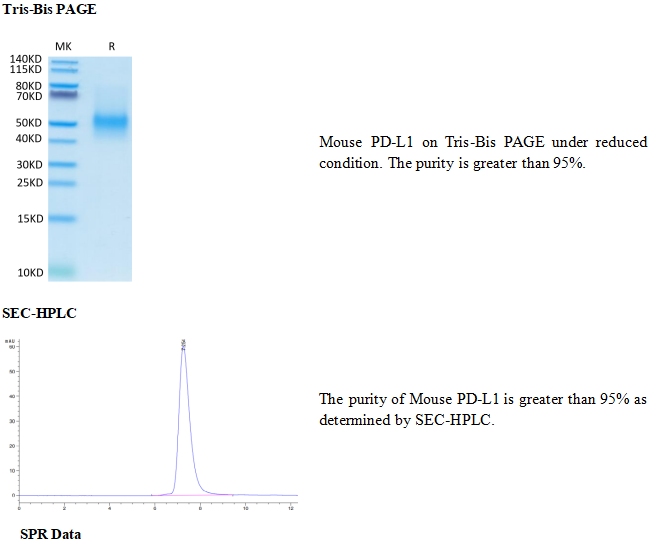B7-H1, also known as PD-L1 and CD274, is an approximately 65 kDa transmembrane glycoprotein in the B7 family of immune regulatory molecules. Mature mouse B7-H1 consists of a 221 amino acid (aa) extracellular domain (ECD) with two immunoglobulin-like domains, a 21 aa transmembrane segment, and a 30 aa cytoplasmic domain. Within the ECD, mouse B7-H1 shares 73% and 86% aa sequence identity with human and rat B7-H1, respectively. B7-H1 is expressed on inflammatory-activated immune cells including macrophages, T cells, and B cells, keratinocytes, enothelial and intestinal epithelial cells, as well as a variety of carcinomas and melanoma. B7-H1 binds to T cell B7-1/CD80 and PD-1. It suppresses T cell activation and proliferation and induces the apoptosis of activated T cells. It plays a role in the development of immune tolerance by promoting T cell anergy and enhancing regulatory T cell development. B7-H1 favors the development of anti-inflammatory IL-10 and IL-22 producing dendritic cells and inhibits the development of Th17 cells. In cancer, B7-H1 provides resistance to T cell mediated lysis, enhances EMT, and enhances the tumorigenic function of Th22 cells.
高纯度、高活性、低内毒素、高批间一致性
产品数据


-25 ~ -15℃保存,收到货之后有效期1年。 复溶后, 无菌条件下,-85 ~ -65℃保存,3个月有效期。





